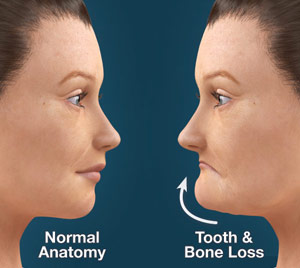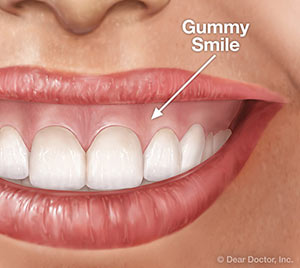Search Results
161 content pages
Blood Pressure Medications and Your Gums
Before prescribing any medications — even lifesaving ones, such as those used to reduce blood pressure or prevent epileptic seizures — your health care professionals carefully weigh the benefits a drug offers against the possible risks of taking it, including its potential side effects. In most cases, the side effects are relatively slight: for example, drowsiness, an upset stomach, or minor aches. But in some individuals, particular drugs may produce side effects that are more troublesome.
This is sometimes the case with a class of drugs called calcium channel blockers (CCBs), which are commonly used to treat high blood pressure...

Blood Thinners and Dental Procedures
Millions of people regularly take anticoagulant or antiplatelet medications (sometimes called “blood thinners”) to help prevent heart attack and stroke, and to manage a variety of medical conditions including cardiac arrhythmia and stent placement. While these drugs have proven, life-saving benefits, they can also cause side effects such as increased bleeding. So it may be a cause for concern if you're taking one of them and you need to have a dental procedure.
Anticoagulants are among the more widely used pharmaceuticals today, particularly for heart patients. Some common prescription anticoagulants include heparin, warfarin (Coumadin and generics), clopidogrel (Plavix) and dabigatran...

Bone Grafting
Do you think of bone as a hard, rigid material that never changes? In fact bone remodels itself all the time: Your body is constantly depositing new bone cells and removing old ones. In the case of the bone that supports your teeth, this process can be helpful or harmful. For example, the jawbone's adaptability allows an orthodontist to move teeth into a better position with braces. But in the case of losing a tooth as an adult, the bone changes that result can have serious consequences.
When teeth are lost, the bone that used to surround them begins to...

Top Reasons to Choose Dental Implants
The dental implant is today's state-of-the-art tooth replacement method. It consists of a very small titanium post (the actual implant), which is attached to a lifelike dental crown. The crown is the only part of this tooth-replacement system that is visible in your mouth. The implant itself rests beneath your gum line in the bony socket that used to hold your missing tooth. Two, four or more implants can be used to support multiple crowns, or even an entire arch of upper or lower replacement teeth. Whether you are missing one tooth, several teeth or all your teeth, dental implants...

Tooth Sensitivity
If your teeth seem especially sensitive after you brush them or when you consume certain foods or beverages, you're hardly alone: By one estimate, around 35 percent of the U.S. population experiences some degree of tooth sensitivity. While the difference between sensitivity and pain may be somewhat blurry, we can say that sensitive teeth usually produce discomfort in response to a stimulus like temperature, pressure, or even the sweetness of particular foods. What causes tooth sensitivity — and what should you do about it?
In general, tooth sensitivity results when dentin, the living tissue that makes up most of the...

Aging and Dental Health
Today, Americans are not only living longer — we're also retaining our natural teeth longer than ever before. But this rosy picture isn't free of thorns: Older adults tend to require increasingly complex dental treatments; are often more prone to contracting certain diseases; and sometimes find it challenging to keep up with daily oral health practices.
Yet maintaining good oral hygiene is critically important as we age. When problems occur in the mouth, they can cause difficulty chewing, swallowing, speaking and smiling — basic functions which can affect both physical and social well-being. It's possible that medications prescribed for other...

Gummy Smiles
Some people feel self-conscious about smiling because they believe their gums are too prominent. Though we each have our own definition of what makes a smile beautiful — including how much gum is too much — a smile will usually be perceived as “gummy” when 4 millimeters (just over an eighth of an inch) of gum tissue shows. If your smile looks gummy to you, it's important to figure out exactly what's causing this. Only then can the appropriate cosmetic dental or periodontal (gum) procedures be recommended to give you a more pleasing appearance of the gums and teeth.
Causes...

Smile Makeover
Smiling with confidence makes you feel great. A beautiful smile is also an important social and professional asset. Yet there are many people who avoid showing their teeth in public or in photographs because they don't like what they see. If that describes you, then why not start the process of getting the smile you've always wanted with a smile makeover?
A smile makeover goes beyond simply responding to dental problems as they arise. It's a comprehensive smile-rejuvenation plan that's uniquely suited to your own facial features and aesthetic preferences. The results can be quite dramatic — both in terms...

Corrective Jaw (Orthognathic) Surgery
In many cases, problems with the bite or the alignment of the teeth can be corrected using today's advanced methods of dental and orthodontic treatment. Sometimes, however, skeletal and dental irregularities aren't so easy to remedy, even with the most up-to-date non-surgical techniques. That's when corrective jaw surgery (also called orthognathic surgery) may be recommended.
Jaw surgery can be used to remedy severe orthodontic problems involving the relationship between the teeth and jaws, including the correction of underbites (the most frequent surgical correction) and congenital abnormalities (birth defects) related to jaw development. It can even help alleviate sleep apnea, a...

Cosmetic Dentistry
It's impossible to overstate the emotional, social and professional benefits that smiling with confidence can give you. If you find you cover your mouth when you smile, or even hold back your smile because you don't want to show your teeth, you should consider what cosmetic dentistry — the art of smile enhancement — can do for you.
The first step in any smile makeover is a thorough dental examination, to make sure that your cosmetic problems really are just that, and not a sign of underlying dental disease. Once your health has been established, your smile can be cosmetically...

Cosmetic Gum Surgery
There are many elements that make up an ideal smile; bright, healthy-looking teeth immediately come to mind. But the gum tissue that surrounds and supports those teeth also plays a big role in how appealing your smile will look.
There are various cosmetic issues involving gum (gingival) tissue. For example, your smile may look “gummy” — meaning you seem to display too much gum tissue when you smile, or your teeth appear too short. Sometimes it's the opposite problem — your teeth appear too long because your gum tissue has receded (pulled back), exposing tooth-root surfaces that were covered at...

Early Orthodontic Treatment
You probably know that it's never too late to begin orthodontic treatment — but when it comes to your youngster's teeth, did you know that earlier may be better than later? According to the American Association of Orthodontists, kids should have an initial orthodontic screening at age 7. What makes early evaluation — and potentially, early treatment — so important?
There are several ways that kids can benefit from an orthodontic evaluation at an early age. But it's important to recognize that early evaluation isn't necessarily followed by early treatment; in most cases, if orthodontic work is needed, your child's...

Tooth Pain
The sensation of tooth pain — ranging from minor aching and sensitivity to acute distress — is something almost everyone has experienced at one time or another. In general, pain is a protective response from the body, telling you that something is wrong. But tooth pain can be troublesome because it's often hard to pinpoint exactly where it's coming from, and it may come and go in response to other stimuli — eating hot or cold foods, for example.
A few non-dental problems, such as sinus infections, cluster headaches, and certain diseases or drugs, can cause tooth pain. But by...

Periodontal Laser Treatment
Since their invention in the early 1960s, lasers have found ever-increasing applications in medicine and dentistry. The latest generation of lasers is now being used in various dental procedures, ranging from disease detection to soft-tissue treatments, and even some hard-tissue procedures like the preparation of small cavities for fillings. One promising area where this technology is having an impact is the field of periodontal (gum) therapy.
Why are more periodontists using lasers? In general, these high-tech tools seem to offer several advantages over conventional treatments for soft-tissue procedures. They are considered minimally invasive treatment methods, meaning that it's possible to...

Laser Dentistry
They are inside your laptop computer and your DVD player, present on the factory floor and the supermarket checkout line. And now, lasers are finding increasing use in dentistry. Someday soon, you may have a routine dental procedure performed with the aid of a powerful, yet highly controllable beam of laser light, instead of a drill or a probe.
What are dentists currently using lasers for? These devices have been proven to help in the detection and treatment of oral diseases. They can be used for treating gum disease, detecting cancer, and pinpointing tooth decay in its early stages. They...